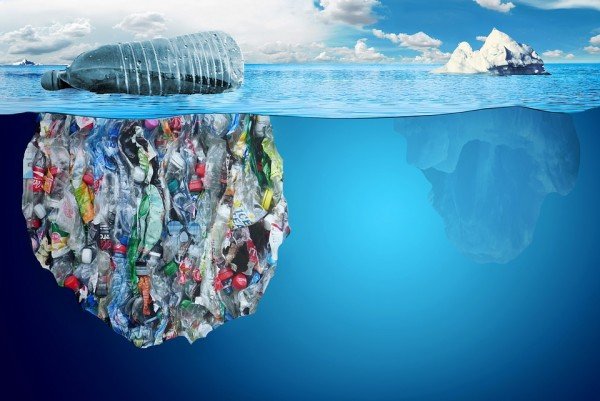
Plastic waste has been accumulating in the oceans since as far back as the 1920s; just a few years after Leo Baekeland accidentally invented the first type of plastic called bakelite, back in 1907.
The use of plastic exploded in the 1950s, and scientists began documenting the problem of plastic pollution in the oceans as far back as the 1960s. Yet, for the most part we have continued to ignore the increasingly loud alarm bells being sounded by scientists in this regard. If anything, our reliance on plastic for packaging and other uses has continued to grow with each passing decade.
All that plastic has to go somewhere, and 8 million tons of it are now dumped in the ocean each year, via inland streams, rivers, and other waterways that connect to it in some way. (RELATED: Stay updated on other threats to our environment at Enviro.news)
Once the plastic reaches the ocean, UV exposure and wave action makes it break down into smaller pieces. Some animals are attracted to the way the plastic reflects light, while others consume it inadvertently along with their food. As a result, birds, turtles, marine mammals, and fish have all been found with bits of plastic in their guts.
And when humans consume that fish, they inadvertently consume the plastic along with it.
So, just how much plastic are we consuming?
Scientists at the Environmental Toxicology Unit at Ghent University in Belgium recently set out to answer that question when they undertook the first-ever study to report on the possible effects of marine plastics on the humans who accidentally consume them. In analyzing the occurrence of microplastics in European shellfish, the scientists discovered that shellfish consumers are likely being exposed to about 11,000 microplastics each year. While the scientists noted that the plastic likely posed health risks to the humans consuming it, they were not yet able to calculate what that risk might be.
And the problem is by no means confined to Europe. Chelsea Rochman and a team from the University of California Davis school of veterinary medicine, recently performed a study in which they took 76 samples of 13 different species of fish and shellfish from a market in California, as well as 76 fish of 11 different species from a market in Indonesia. The animals were gutted and then a chemical agent was used to dissolve their insides so that only plastic and other debris would be left behind. More than half (55 percent) of the fish samples from Indonesia contained debris, particularly plastic, while in the U.S., 67 percent of the species sampled also contained debris, in this case mostly textile fibers.
Having conclusively confirmed that we are indeed consuming plastic and other debris in our seafood, the question that now has many scientists concerned, is: Just how dangerous might this plastic consumption be?
Three areas of concern arise from the dumping of plastic in the ocean:
The fish and other sea creatures that accidentally consume the plastic may suffer internal injuries, malnutrition, or a slow and painful death;
Although the plastic in the oceans doesn’t ever disappear completely, it does break down to an extent, and scientists are concerned about the possible effects of the chemicals released during this decomposition on water quality;
Perhaps of most pressing concern to humans, is to discover just how dangerous inadvertently consuming this plastic and other debris along with our seafood actually is.
One thing we do know for sure, though: Human mismanagement is busy eroding every aspect of life on our planet. The day may not be too far off when enjoying a lovely seafood steak or lobster on a special occasion has become a thing of the past, because of the pervasive and unrelenting pollution of the ocean.
Sources for this article include:
TheGuardian.com
EcoTox.Ugent.be
GreenFleet.DODLive.mil[PDF]
NewScientist.com
Hi! I am a robot. I just upvoted you! I found similar content that readers might be interested in:
http://www.naturalnews.com/2017-02-17-seafood-lovers-are-eating-11000-plastic-fragments-each-year.html